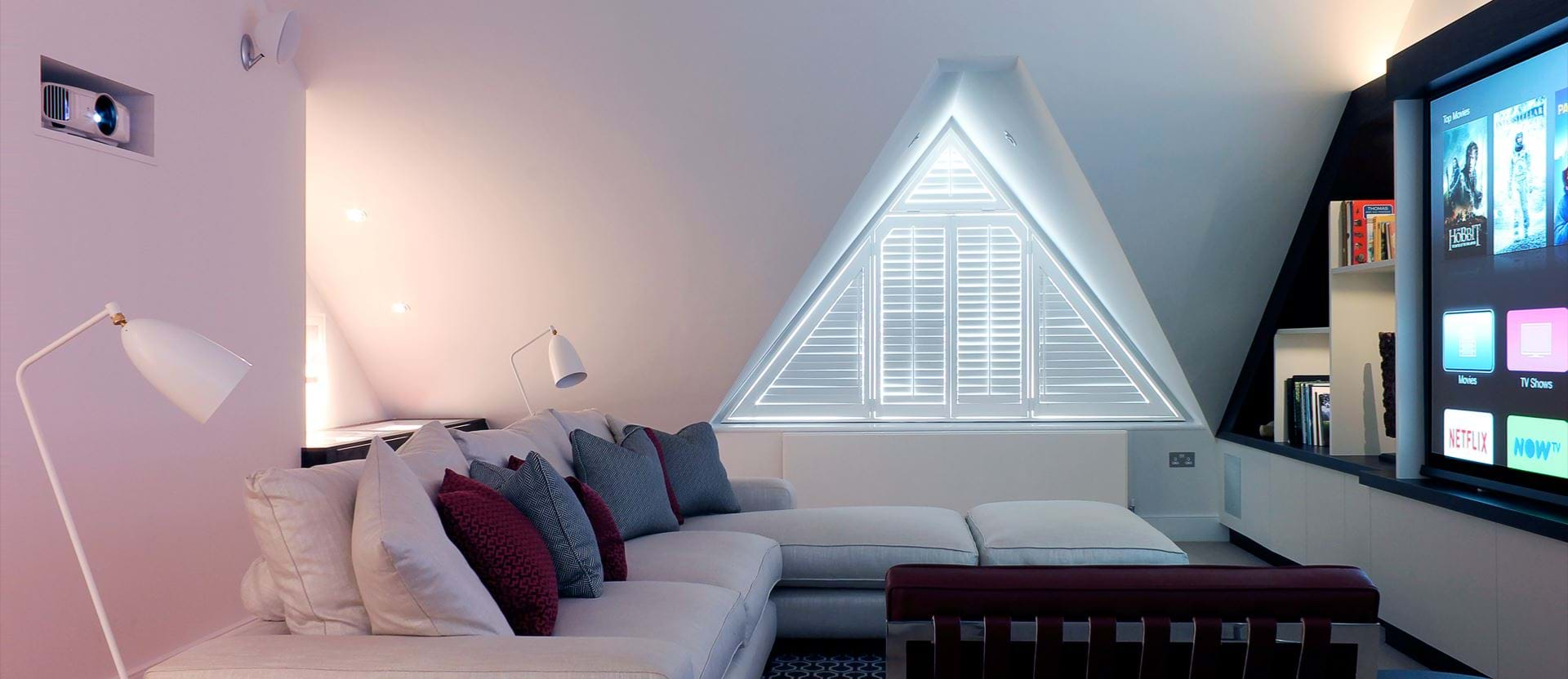
How do I plan a system?
As a basic premise, a dimmer channel is needed for each group of lighting that needs to be controlled separately. With Rako, this may either be a single module or a channel within a rack. The more groups, or channels of lighting, the more flexible the system is but equally the cost goes up accordingly. Of course some grouping is obvious, a row of wall lights will always need to be set to the same level, but maybe front and rear wall lights should be separated to allow differential lighting from front to back, especially if a TV is on the front wall.
Give some priority to rooms, everyone has their own opinions on which are key rooms. Whilst dimming in a master bedroom is desirable, if nothing else to avoid the harsh glare of light first thing in the morning, guest bedrooms may come further down the pecking order. Bath and shower rooms may be more appealing under subdued lighting but even more so if they're used at night, again when a harsh glare is unpleasant. Are bathrooms often used for baths when a relaxing soak might be enjoyed more in softer lighting? For a true whole house control of course all the rooms should be controlled by the system and its nice to have, for example a 'Master Off' button by the bedside to be sure all lighting is off but a complete system is potentially expensive.
When considering wet rooms think of the extract, regulations may require this to be controlled by the lighting system but again with a separate control module this can be programmed not to come on during those nightly trips to the loo.
Open plan spaces may need to be thought of as separate rooms for control. This isn't a necessity but when a room has two uses, which maybe concurrent, think about how the lighting will be controlled. For example in an open kitchen/living space, will people want to dim the living room lights whilst the kitchen needs to be bright, especially if you're entertaining and preparing food at the same time. Of course a scene setting system is designed to give flexible control but when you consider say 4 scenes in the living area and 4 in the kitchen this gives 16 combinations, if nothing else a panel with 16 scene options is confusing and messy. In this instance it might be better to think of the space as 'two control rooms' even if there is a 'Master' control for the area. Don't have circuits of lights that span the two areas as these may well get caught in the 'battle for control'.
Even within a scene-set room some circuits may benefit from separate control for instance bedside lighting. As with the previous example above if the bedside lights are integrated into the normal room scenes the possible combinations of ambient room settings multiplied by the his/her on/off scenarios, let alone with dim level options, can be considerable. Instead, possibly think of either having a separate, normal switch for these, or a separate button, or buttons (for dimming) on a Rako plate. There are solutions for these issues but they are best discussed before buying a system rather than trying to configure unsuitable parts after the event.
Hallways are often statement rooms and have lighting that benefits from intelligent control. They do however also have a requirement for two way control of stairwells and landings. Many users are familiar with the traditional two way switching concept. When planning a Hall/Stairwell area it is worth thinking about how the different floors are to be controlled, both separately and together. Commonly the best solution is to use control panels with slightly different layouts to give the flexibility required. Examples of these are the RCM072 and RCM102.
Think about where wall panels should be located and what they should control. Generally a wall-plate should be controlling scenes within the room itself. Depending on the scope of the system one control panel can be programmed to control different rooms but this can rapidly make the system confusing to use and often clients' wishes have unforeseen contradictions that make programming difficult or impossible.
Consider what other controls may be required, such as 'holiday mode' to simulate occupancy. Interfacing to security systems so that lights come on as well as an alarm sounding. Is control from a smartphone or tablet required?
If the system is to be integrated with an audio visual system then ask the AV installer for advice, they will have experience with lighting control systems and be able to help.
Finally, remember that at any point Rako will be happy to help with planning a system for you.
